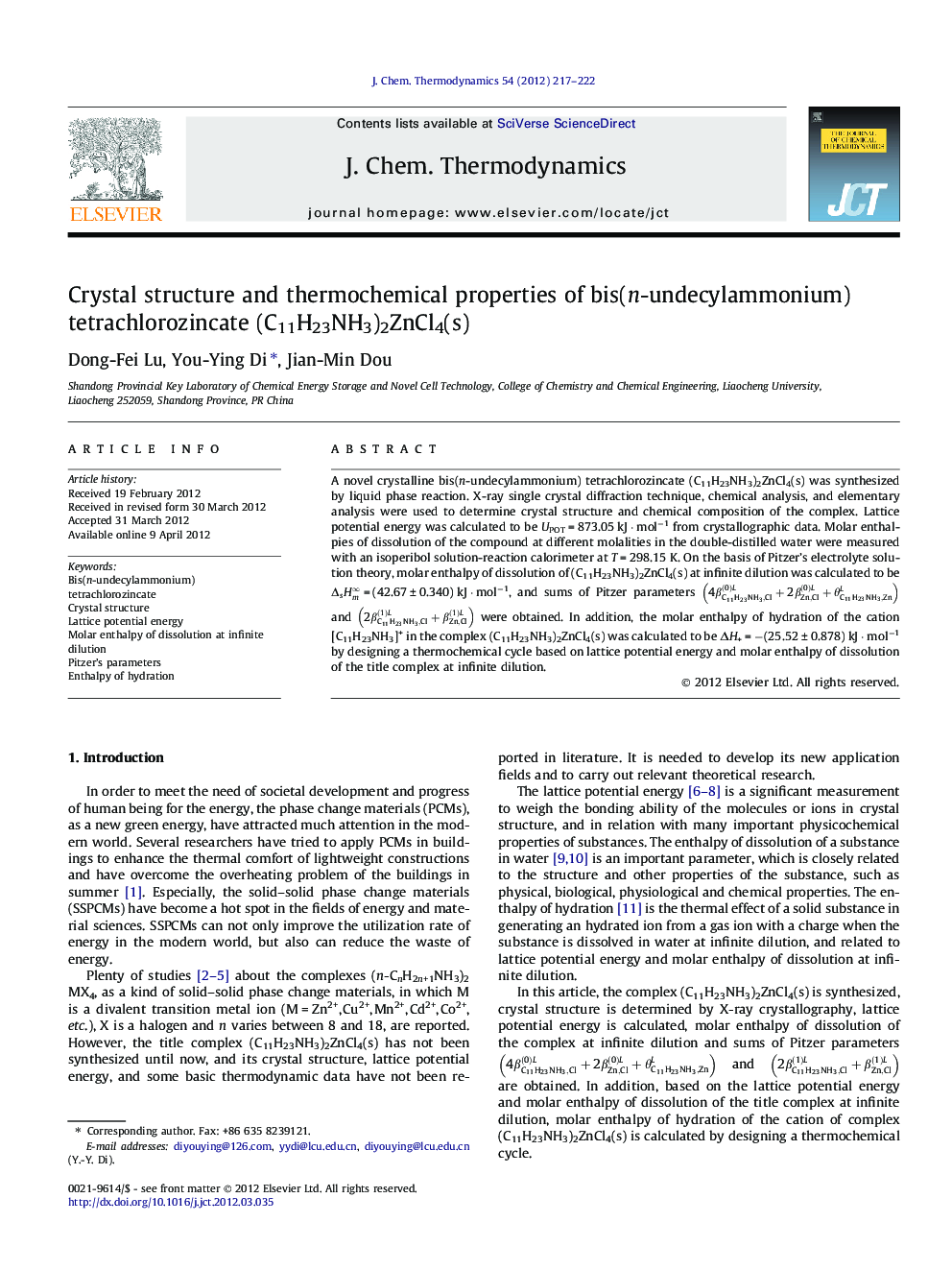| Article ID | Journal | Published Year | Pages | File Type |
|---|---|---|---|---|
| 215667 | The Journal of Chemical Thermodynamics | 2012 | 6 Pages |
A novel crystalline bis(n-undecylammonium) tetrachlorozincate (C11H23NH3)2ZnCl4(s) was synthesized by liquid phase reaction. X-ray single crystal diffraction technique, chemical analysis, and elementary analysis were used to determine crystal structure and chemical composition of the complex. Lattice potential energy was calculated to be UPOT = 873.05 kJ · mol−1 from crystallographic data. Molar enthalpies of dissolution of the compound at different molalities in the double-distilled water were measured with an isoperibol solution-reaction calorimeter at T = 298.15 K. On the basis of Pitzer’s electrolyte solution theory, molar enthalpy of dissolution of (C11H23NH3)2ZnCl4(s) at infinite dilution was calculated to be ΔsHm∞ = (42.67 ± 0.340) kJ · mol−1, and sums of Pitzer parameters 4βC11H23NH3,Cl(0)L+2βZn,Cl(0)L+θC11H23NH3,ZnL and 2βC11H23NH3,Cl(1)L+βZn,Cl(1)L were obtained. In addition, the molar enthalpy of hydration of the cation [C11H23NH3]+ in the complex (C11H23NH3)2ZnCl4(s) was calculated to be ΔH+ = −(25.52 ± 0.878) kJ · mol−1 by designing a thermochemical cycle based on lattice potential energy and molar enthalpy of dissolution of the title complex at infinite dilution.
Graphical abstractFigure optionsDownload full-size imageDownload as PowerPoint slideHighlights► Crystalline bis(n-undecylammonium) tetrachlorozincate was synthesized. ► Lattice potential energy was calculated. ► Molar enthalpy of dissolution at infinite dilution were obtained. ► Molar enthalpy of hydration of the cation [C11H23NH3]+ was calculated.
